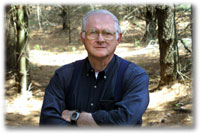As readers of this blog will
recall, I heat my cabin with wood stoves, one in the kitchen-dining room area,
and one for the rest of the place. When
the outside temperature is above zero, I depend solely on the kitchen stove—an
old, heavy, cast iron cook stove. I
bought it used in 1968, which means I’ve had for 47 years. It was an old stove when I bought it, so I
really don’t know it’s age.
The stove is a Home Comfort, and for
it’s day it must have been the most up and coming cook stove on the market, for
it is a combination stove. On one side
it burns wood, on the other side it has four gas burners. We seldom use the gas side of the stove,
maybe a few times in the summer when it’s too hot to light up the wood burner.
The oven door even has a thermometer,
with the following readings, “warm,” “moderate,” “hot,” and “very hot.” But it’s broken; the faded red needle is
stuck on “warm.”
In winter, the old stove not only warms
much of the cabin, but its surface is perfect for cooking—nothing tastes better
than vegetable soup or chili that simmers on the stove for a couple of
hours.
I also have an old-fashioned
teakettle that sends up a little cloud of steam to add humidity to the cabin,
and provide me with hot water when I want a cup of hot chocolate.
The other day I was reading that
those of us who have desk jobs, which includes those of us who are writers,
should get up and walk around every hour or so or we may die an early
death. I’m too old to die an early death,
but nonetheless, to keep my stove going I have to get up every hour or so to
feed it more wood.
THE OLD
TIMER SAYS: Wood burning cook stoves have benefits that go beyond cooking and
keeping you warm.
LOOKING
FOR INFORMATION
I am
working on the history of the Civilian Conservation Corps (CCC) in Wisconsin,
which will be published as a book by the Wisconsin Historical Society
Press. The CCC operated throughout the
country from 1933 to 1942, and had a strong presence in Wisconsin. CCC boys planted trees, helped with soil
conservation, improved state and national parks, fought forest fires and much
more.
I
am looking for photos, letters, diaries, and stories told by and about
Wisconsin CCC members—the work they did, what they did in their free time, how
they related to the communities in which they worked, and whatever else someone
might have. Many Wisconsin families were
involved with the CCC and their story has not been told.
If
anyone has such information, please get in touch with me at: jerryappsauthor@gmail.com
UPCOMING EVENTS:
Wednesday, February 4, 6:30
p.m. Mt. Horeb Library (The Quiet Season
and The Great Sand Fracas of Ames County.
Saturday, February 14, 2:30
p.m. Garden Expo Madison. Garden Wisdom
Tuesday, February 24, 7:00
p.m. River Falls Library, The Great Sand Fracas of Ames County.
Wednesday, February 25,
11:30-1:30 Chapter 2 Bookstore, Hudson, WI. The Great Sand Fracas of Ames
County & The Quiet Season.
Purchase Jerry’s
DVDS and his Books from the Patterson Memorial Library in Wild Rose, Wisconsin
(a fund raiser for them):
The
library now has available signed copies of Jerry’s DVDs, Emmy Winner, A Farm Winter with Jerry Apps and Jerry Apps A Farm Story.
Also
available are several of Jerry’s signed books including The Quiet Season (on which the DVD A Farm Winter is based), as well as Rural Wit and Wisdom and Old
Farm, (which are related to the DVD Jerry
Apps a Farm Story). Also available is Jerry’s new novel, The Great Sand Fracas of Ames County.
Contact
the library for prices and special package deals.
Patterson
Memorial Library
500 Division Street

1 comment:
And of course when you chop the wood to feed the fire, you warm yourself twice!
Post a Comment